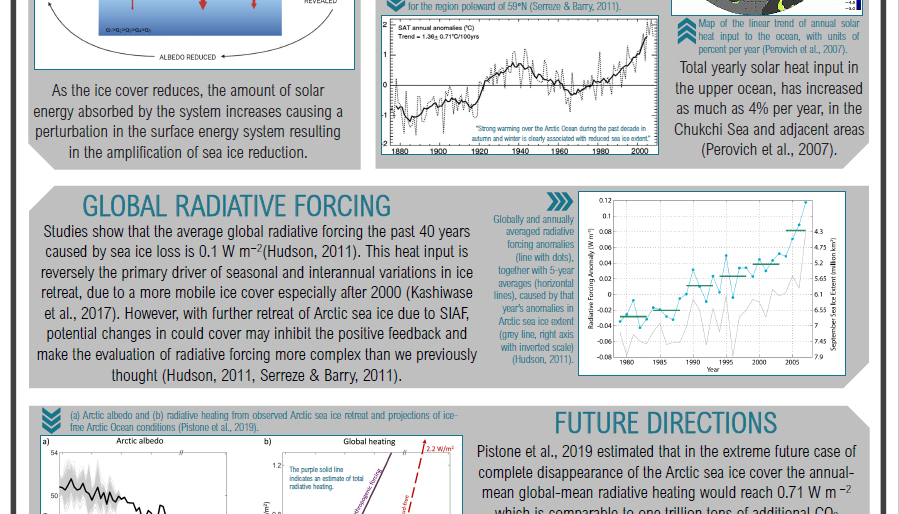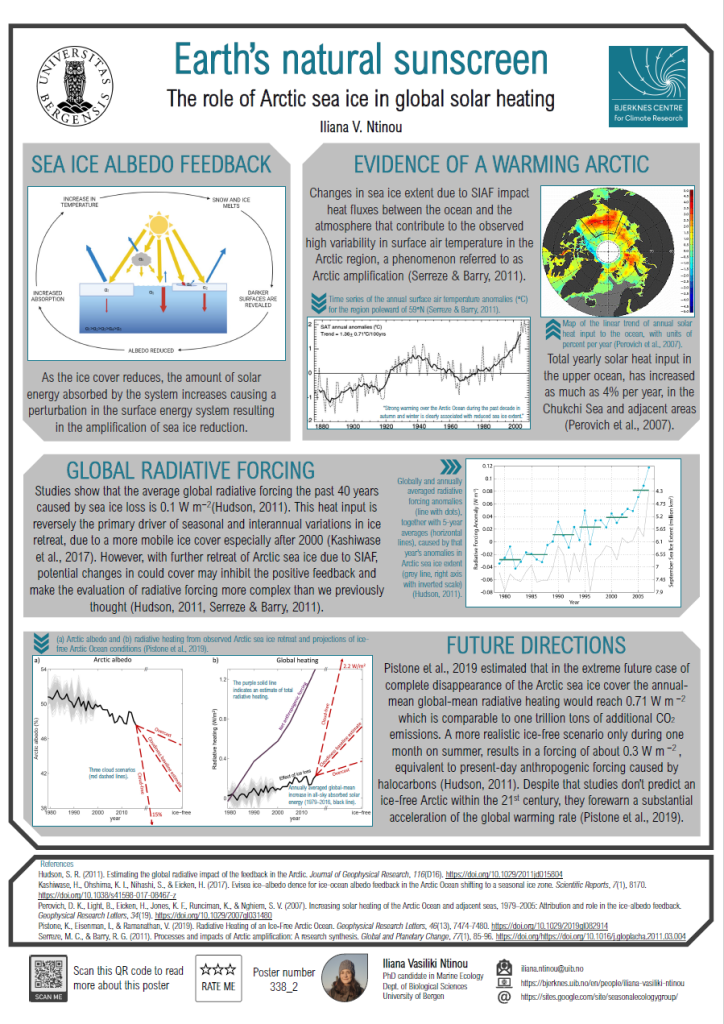Abstract
Sea ice albedo feedback (SIAF) is a strong positive feedback process in Earth’s climate system. Melting of highly reflective sea ice results in higher absorption of solar energy, leading to warmer temperatures that again amplify sea ice melt and lead to ocean warming. In the Arctic, SIAF is an intricate process with a prominent seasonal lag in the melting of sea ice and heat absorption associated with the high amount of solar radiation during spring and summer in the northern hemisphere. Studies have shown that a 50% increase in the accumulated heat absorption observed at the end of August is due to SIAF. For annual values estimates reach up to a 4% increase in absorbed solar radiation of the Pacific region of the Arctic, as a result of sea ice reduction the last two decades. Some extreme ice-free scenarios predict an annual global mean radiative heat increase comparable to a trillion tons of CO2 emissions that would accelerate global warming by 25 years. Despite all this evidence, there is a lot to uncover regarding the complex interplay of SIAF with several other physical factors. Such factors are cloud cover variability, meltpond distribution, atmospheric and oceanic circulation patterns, longwave radiative forcing due to anthropogenic CO2 emissions. All these can potentially contribute to drastic sea ice reductions and consequently accelerate warming of the global climate.


